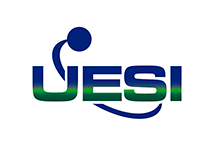Houston’s coastal communities and marine agencies increasingly see artificial reef construction services as vital for restoring ecosystems and boosting fisheries. Yet persistent misconceptions can derail project goals. This article clarifies six common myths about reef construction, explaining how underwater habitat restoration, eco reef building solutions, and marine biodiversity support structures actually work—and why choosing a proven partner like Underwater Engineering Services Inc (UESI) is essential.
Myth 1: Maintenance Planning Is Optional
A widespread belief is that once a reef is installed, it no longer needs attention. In reality, regular inspections and upkeep are crucial. Houston’s currents, storms, and sediment shifts can weaken or bury reef modules. Over time, structures can degrade or become overgrown with unwanted species. Responsible artificial reef construction services always include post-deployment monitoring, adaptive repairs, and maintenance budgeting to ensure long-term stability and ecological success.
Myth 2: Ecological Compatibility Doesn’t Matter
It’s false that any submerged object can serve as a reef. Effective designs must reflect local water movement, depth, and substrate type. Poor material choices or improper geometry may repel desired species or encourage invasive ones. Reliable eco reef building solutions combine engineering with marine biology, ensuring that shapes, textures, and layouts promote coral settlement and fish aggregation while minimizing environmental disruption.
Myth 3: Regulatory Compliance Is Just Paperwork
Some project owners underestimate how complex reef permitting can be. In Houston, artificial reef projects must comply with federal, state, and local agencies, including environmental impact reviews and stakeholder consultations. Ignoring or under-budgeting for compliance can delay or halt a project entirely. Successful underwater habitat restoration demands a contractor experienced in documentation, environmental assessment, and coordination with coastal regulators.
Myth 4: Deployment Operations Are Simple
Installing reef structures under water is far from risk-free. Large, heavy modules must be positioned precisely, often in poor visibility and changing currents. Safety and accuracy are paramount. Houston’s tides, weather, and marine traffic further complicate logistics. Any miscalculation can damage equipment or endanger divers. Choosing a team with proven installation protocols, strong safety standards, and skilled dive engineers helps avoid costly or hazardous errors.
Myth 5: Biodiversity Gains Are Guaranteed
Not all reef projects automatically enhance marine life. Some fail because of poor site selection, weak water flow, or limited monitoring. In certain cases, sediment plumes or shading can harm existing habitats instead of improving them. Effective marine biodiversity support structures rely on ecological studies, adaptive management, and ongoing performance evaluations to ensure they truly expand habitat diversity and productivity.
Myth 6: Cost Predictability Is Absolute
Reef construction rarely follows a fixed cost model. Variables like site conditions, weather, or material availability can shift expenses. Assuming a static budget risks financial strain mid-project. The most resilient artificial reef construction services adopt flexible contracts, cost-control transparency, and contingency planning. This approach manages uncertainty while maintaining quality and safety from design through deployment.
Best Practices to Counter Myths
Overcoming these misconceptions requires a disciplined, evidence-based approach to project planning. Industry leaders emphasize integrated project management, combining engineering, ecology, and regulation from the start. Key steps include:
- Conducting thorough hydrographic and geotechnical surveys before design.
- Engaging regulators and community stakeholders early.
- Modeling eco reef building solutions for optimal hydrodynamics and species attraction.
- Scheduling installations during stable weather windows.
- Maintaining strict QA/QC and safety oversight throughout deployment.
- Incorporating long-term monitoring and adaptive maintenance in all contracts.
When executed together, these steps create more resilient reef systems, reduce risk, and deliver measurable environmental returns.
Why Underwater Engineering Services Inc (UESI) Is a Valuable Partner
For clients in Houston, partnering with skilled and reputable experts makes a significant difference in ensuring success. Underwater Engineering Services Inc (UESI) brings over 39 years of experience combining certified divers, marine engineers, and topside project managers. This integrated approach ensures every phase—from survey to construction—meets both ecological and regulatory requirements.
UESI begins with comprehensive site assessments, including dimensional and environmental analyses, to identify risks and optimize designs. Their teams follow rigorous safety and quality management programs aligned with U.S. and Gulf Coast standards. Beyond installation, UESI offers underwater inspection, structural rehabilitation, and reef restoration—critical services that support sustainable underwater habitat restoration and long-term performance.
In a region where coastal resilience and marine restoration are growing priorities, working with an experienced company like UESI ensures that reef projects meet both environmental and economic objectives—turning myths into measurable results.
Debunking Myths Related to Artificial Reef Construction Services in Houston
Myths about artificial reef construction services—whether about cost, ecology, or maintenance—can lead to flawed expectations and avoidable setbacks. Success comes from replacing assumptions with sound planning, engineering, and environmental science.
By applying best practices and partnering with a seasoned underwater contractor such as Underwater Engineering Services Inc, reef developers in Houston can transform challenges into opportunities. UESI’s blend of experience, innovation, and safety culture ensures each project supports lasting underwater habitat restoration, promotes sustainable eco reef building solutions, and enhances marine biodiversity support structures that benefit ecosystems, fisheries, and communities for decades to come.




